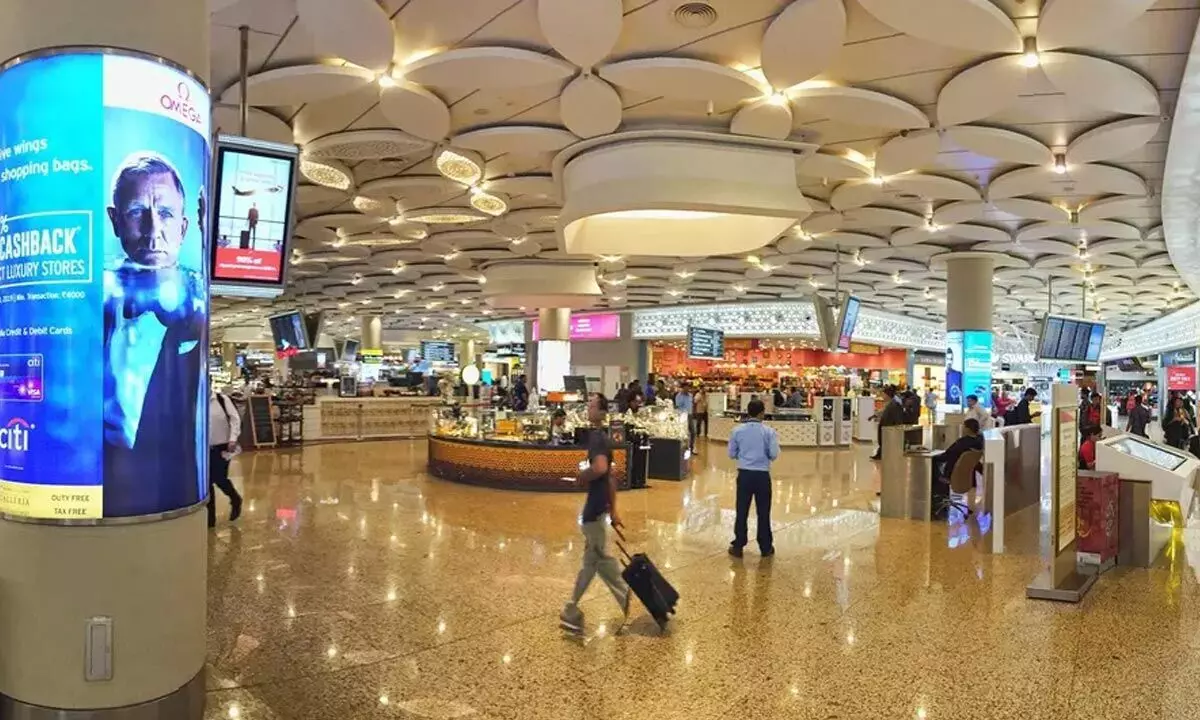Duty free to see 20% CAGR growth in the next five years
Travel retail is the next great frontier for the Indian retail sector
image for illustrative purpose

The growth of e-commerce can be seen as part of a broader digitalization of the travel industry in India, especially airports. This is in part due to younger profiles of travelers, the growth of low-cost airlines and airport privatization. The introduction of GST has decreased the cost and time of logistics and interstate transport, making the Indian retail market more lucrative for foreign investors
India's travel retail market has generated revenue to the tune of $1.3 billion in the current year. It is poised to grow at a CAGR of about 20% for the forecast period 2023-2028, according to Modor Intelligence.
Travel retail is the next great frontier of the Indian retail sector. As people's incomes rise, India's position as a business powerhouse and tourist destination will also continue to solidify, leading to its growth and prosperity. A combination of a large and growing population, increasing air connectivity, inbound tourism and the rising disposable incomes and propensity to travel internationally by the middle class are some of the major factors fuelling the growth of country’s travel retail market.
Tourism industry has shown good signs of revival after Covid-19. According to the latest from Bureau of Immigration, India received 6.19 million Foreign Tourist Arrivals (FTAs) during 2022 as compared to 1.52 million during the same period in 2021.
As per research, it is estimated that nearly 80% of the country's duty-free shoppers are Indians, which is quite unlike other markets in the region, such as Korea or Thailand, where most duty-free sales are from international travelers. However, this is likely to change with the growth in international tourism in the country. While India accounts for only 10.7% of the Asia Pacific region's total international tourist arrivals, its year-on-year growth rate has been well above the region's average in recent years.
The growth of e-commerce can be seen as part of a broader digitalization of the travel industry in India, especially airports. This is in part due to younger profiles of travelers, the growth of low-cost airlines and airport privatization. The introduction of GST has decreased the cost and time of logistics and interstate transport, making the Indian retail market more lucrative for foreign investors, who can invest in single brands, multi brands, wholesale/ cash, carry, e-commerce and duty-free.
Nearly 50% of an international airport's revenue is generated from duty-free and travel retail activities. In terms of sheer size and range offered, the duty-free retail areas at Indira Gandhi International Airport in Delhi and Chhatrapati Shivaji International Airport in Mumbai are nothing less than high-end malls. The largest duty-free area in India is currently operated by Mumbai Duty-Free at Mumbai International Airport Limited (MIAL), followed by New Delhi International Airport Limited (DIAL), which is operated by New Delhi Duty-Free Services (DDFS). The duty-free revenue per passenger for New Delhi and Mumbai was the highest in India at $ 10 and 11 per passenger for FY2022.
Data, omni-channel, and personalization define the future of airport retail. Online pre-purchase orders for airport pickup are more popular in the Indian market than anywhere else in the Asia Pacific region. There is a growing response by duty-free operators to the increasingly flexible payment, ordering pickup and delivery needs of customers. Delhi Duty-Free's 'Shop and Collect' plan, for instance, offers an extra 10% discount to those who pre-book orders at the airport on their outbound journey and pick them upon return.
Perfumes, liquor and tobacco are the top three categories in duty-free stores in India; however, wines and spirits remain the highest on the to-buy list. Liquor is the key category of sales at these stores, with an increasing number of young Indians moving towards single malts and premium white spirits. Deluxe Scotch remains the biggest category and contributes significantly to the growth of the liquor business. Similarly, the cosmetics category is witnessing high growth as more women travel abroad for work and leisure.
Furthermore, the duty-free shops in India at airport arrivals do more business than their peers at departure, and the highest-selling category in arrivals has been liquor. This is primarily because the prices offered on liquor at duty-free shops are extremely competitive. In fact, arrivals account for the lion’s share of the business at duty-free shops as inbound travelers like to pick up items on their return.
The Indian travel retail market is highly competitive, with several international and domestic brands present in the market, including Dufry, Lotte, The Shilla, Delhi Duty-Free, and Flemigo Travel Retail. These stores are increasingly attracting buyers with their exciting range and offers. However, the shopping experience is important too, and it is something that the duty-free stores in India need to work on, especially with luxury products.

